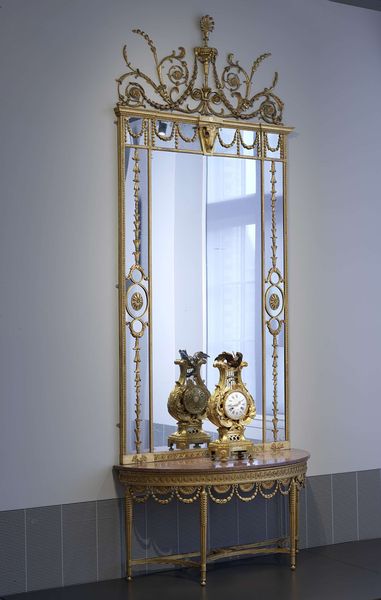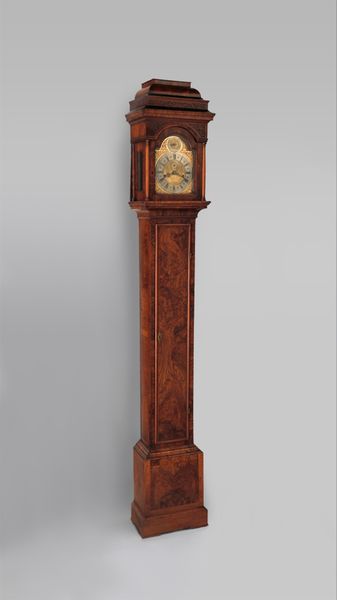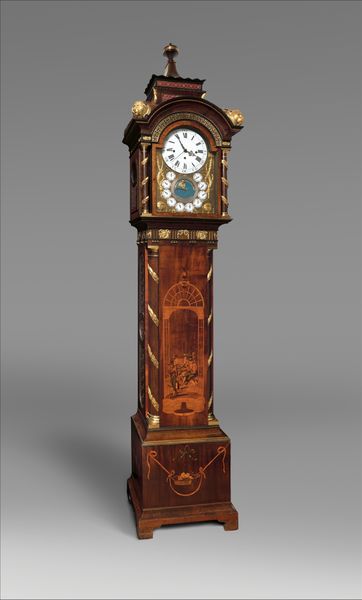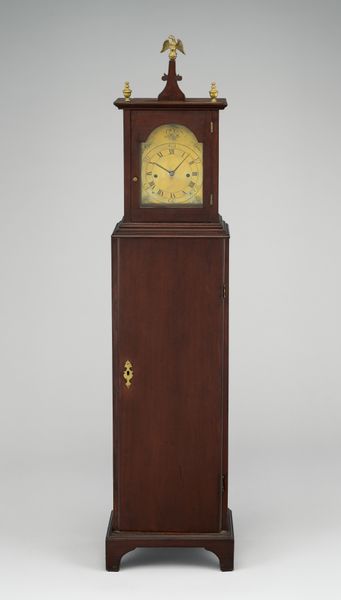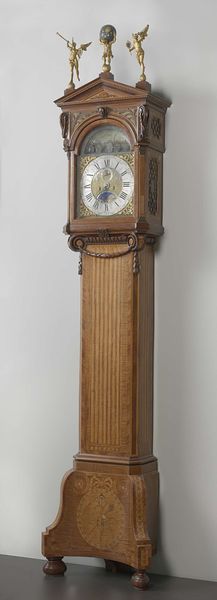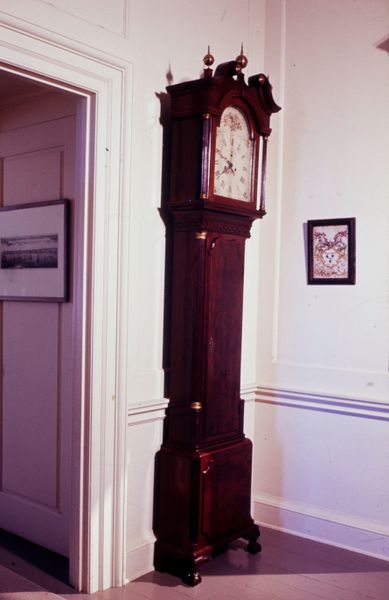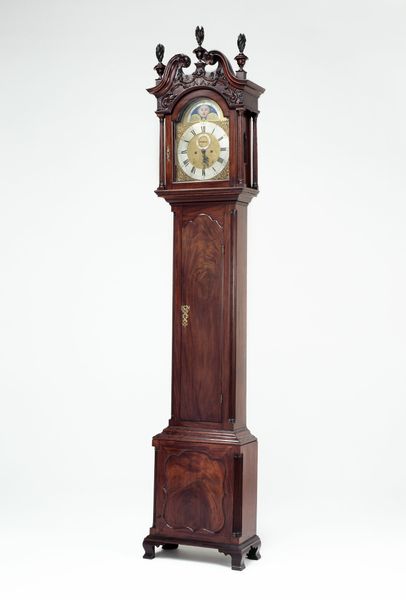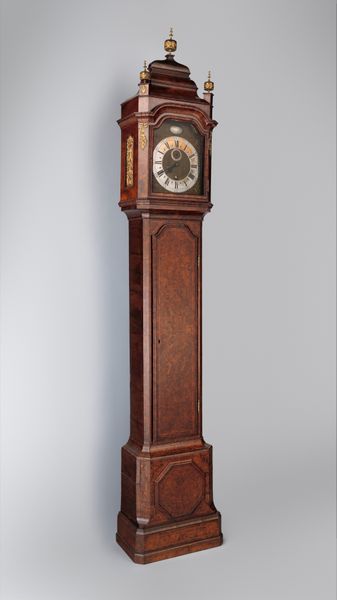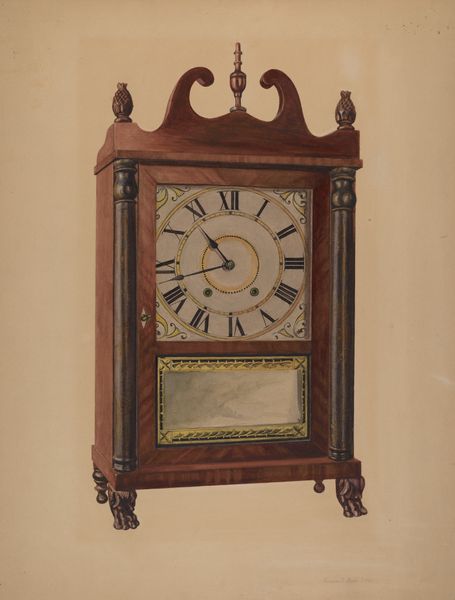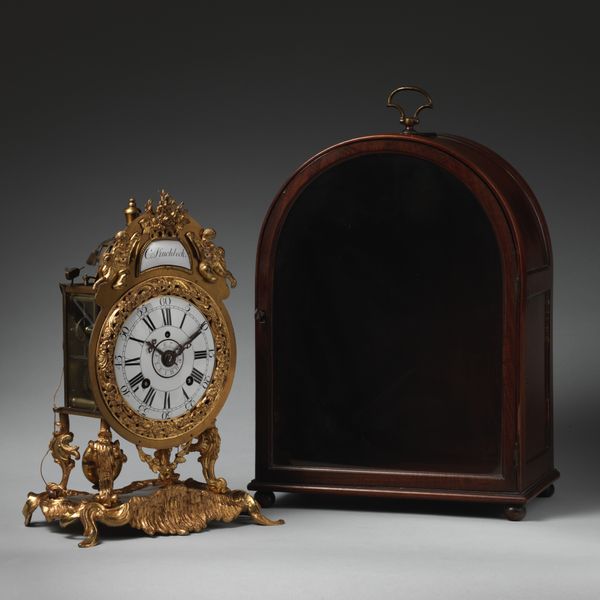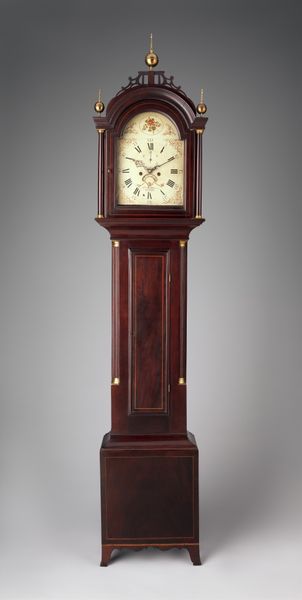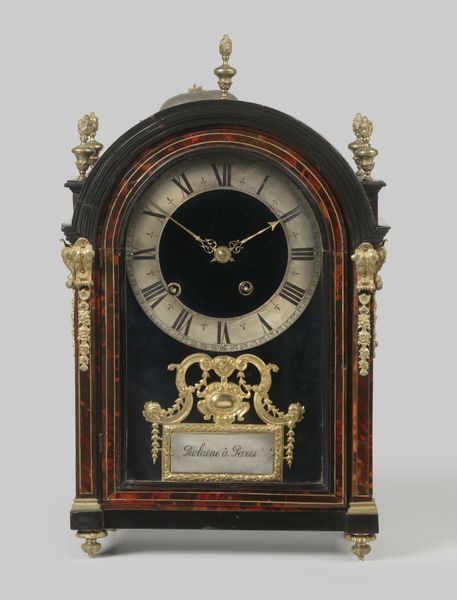
Dimensions: Overall: 90 1/2 × 21 × 12 3/4 in. (229.9 × 53.3 × 32.4 cm)
Copyright: Public Domain
Editor: Here we have Ferdinand Berthoud's "Longcase astronomical regulator," crafted between 1763 and 1775. The materials seem to be a combination of wood and metal, giving it a sculptural presence. It’s certainly impressive in scale and grandeur. What do you see in this piece? Curator: Well, it speaks volumes about power, time, and knowledge during the Enlightenment. The astronomical regulator wasn't just a clock; it was a symbol of scientific progress and colonial ambition. Think about who owned these. Who had the wealth to commission them and what did owning a precise instrument to track celestial movement enable them to do? Navigation? Exploration? Editor: That makes me consider who it excluded as well. Who made it, and under what conditions? Were these instruments linked to exploitation in any way? Curator: Absolutely. The artistry and science are undeniable, but so are the structures of power that enabled their creation. These elaborate pieces also frequently depended on a hidden network of labor—consider the disparity between the maker who acquired fame and recognition and the anonymous artisans without whom this intricate beauty could not exist. The tension is, can we admire craftsmanship while critiquing its origins? Editor: I think that tension is essential, and it makes the artwork more relevant to modern audiences. Thanks! This brings so much to light beyond just its Baroque style. Curator: Precisely. The past isn't a fixed object. It’s a lens through which we examine our present and reimagine our future. And by acknowledging its complexities, we become more aware and responsible observers.
Comments
No comments
Be the first to comment and join the conversation on the ultimate creative platform.

